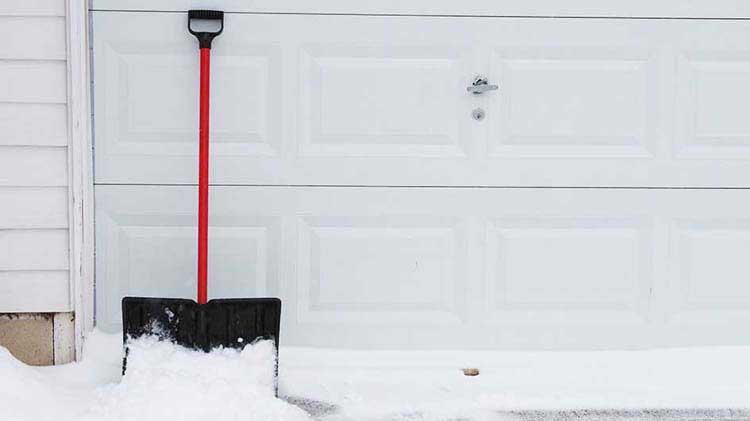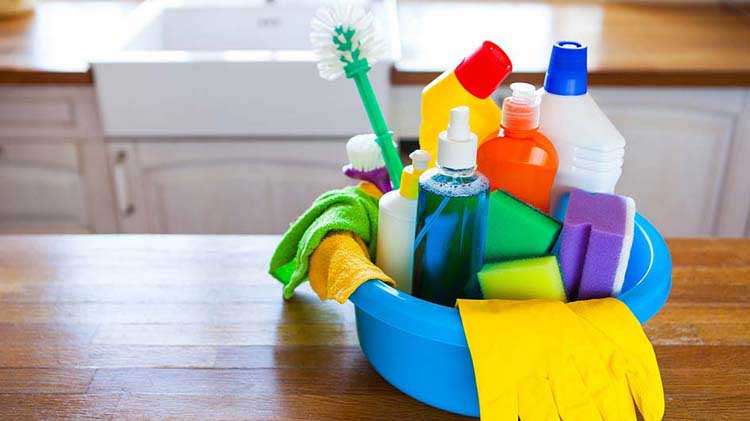DIY home improvement or when to hire a pro
Before jumping into a home or apartment project, weigh the pros and cons of a DIY approach vs. hiring a pro.
Do-it-yourself projects now seem easier than ever. From step-by-step guides to how-to video tutorials online, the most perplexing projects can seem as easy as 1-2-3. Taking things into your own hands now has its own beloved acronym: DIY.
Whether you're considering a home or apartment repair, new room decor or just looking for an inspiring new hobby, you may be ready to jump into DIY-ing. Thinking through the best options before kicking off your project can help avoid an in-over-my-head moment. Depending on your priorities, one approach may be smarter than the other — from a financial, time-saving or just overall effort standpoint.
Keep in mind it's possible it may also cost you more than working with a reliable contractor. And professionals with a track record for quality work can be especially helpful with more complex renovation projects.
Things to consider before a DIY home renovation or hiring a pro
- How much time is involved? Take a look at the time you will spend on the project at hand, including planning, getting permits, purchasing materials and your time doing the repairs or renovations.
- What is the budget? Make a budget for what the project will cost. Make sure you include not only materials, but other items like tools you will need to accomplish the renovation.
- What can go wrong? Account for things that might go wrong in case you hit a gas pipe or scratch floors while doing DIY home improvements. Confirm with your insurance company what your coverage provides if your work somehow causes damage to you or your landlord's property.
- Are you ready? To decide if you should DIY or not, look at the level of complexity involved in the renovation, including specific knowledge needed for the task.
- Will it be fun? Take into account the fun you will have with your project, and if you are willing to put in the time needed to deliver the project.
- Is it safe? Be sure to consider your safety before you start the project.
Examples of DIY projects
DIY home improvement projects typically have the most flexibility in renovations. They are mostly cosmetic in nature or are simple fixes with minimal supplies and don't require a permit.
- Update kitchen cabinet door fronts: According to HomeAdvisor, a kitchen remodeling effort can average around $25,000 or $150 per square foot. Homeowners typically spend anywhere from $13,000 to just over $38,000 for remodels depending on the size of the space, layout and materials used.
- Redo kitchen cabinet doors by repainting or re-staining.
- Add new knobs to give the most trafficked area in the home a fresh feel.
- Add organizers and shelving units to pantries, cabinets and under the sink to organize supplies.
- Fix a leaking toilet: Leaking toilets can waste large amounts of water. To troubleshoot the issue:
- Inspect the float and inlet valve. As you flush, lift the float arm until the water stops.
- Tighten the screw at the top of the ballcock so that the level of the float does not rise above the inlet valve.
- If the water does not stop during step one, you may need to replace the ballcock assembly.
- Add storage to a mudroom: There's no need to work with a custom cabinet manufacturer for a sleek look.
- Install low-cost, pre-made built-ins of different shapes to create a custom look.
- Use ready-made open shelving, stacks of drawers and coat hooks to organize shoes, jackets and bags.
- Replace tile grout: Grimy tile grout can detract from a home's appearance. To replace grout:
- Remove existing grout with a grout rake or electric tool.
- Scrub the area with a stiff-bristle nylon brush to remove loose debris.
- Use a grout float to smear new grout across the surface and into the joints.
- After 20 minutes, clean the area with a grout sponge.
- Once the grout has cured, apply sealer.
- Add curb appeal: Eager to spruce up the front of your home? It's easier than you think. Even a few simple touches will give visitors a great first impression.
- Re-paint your front door or garage door.
- Add easy-to-maintain landscaping, or place potted planters near the front stairs.
- For bigger projects that involve new landscaping, you may want the insights of a landscape pro.
- Patch drywall: To quickly fix a hole in the wall:
- Remove loose drywall behind and around the hole.
- Sand the edges of the hole.
- Adhere a wall-hole patch over the hole.
- Apply drywall-patching compound to the patch and surrounding wall.
- Sand the area once it's dry.
- Spray the area with wall texture spray (if needed) and add a fresh coat of matching paint.
- Apply new paint: A DIY paint job can be a great way to save money. Whether you're looking to repaint bedrooms or simply cover scuff marks in the hallway:
- Prepare the surfaces before starting the painting process.
- In-store paint professionals can help you choose ideal finishes for each type of room.
- Replace tiles: Replacing tile in a small space can be a fun project with an instant wow factor. When replacing tile, be sure to purchase items such as tile cutters, adhesive and a utility knife to get a pro look.
Examples of projects where a contractor should be hired
Before you start any project or home renovation, create a to-do list. With that list, take a comprehensive look at the entire project, start to finish, taking into account factors such as material cost, resources, time and labor costs and timeframes. Also consider if it's worth the investment to have someone think strategically about the whole project. But before you hire out, make sure you can spot a home repair scam so your project finishes as expected.
- Bathroom remodel: Contractors say bathrooms are especially tricky to renovate because of the small size and the numerous pricey components involved. Even in a small space, installing new plumbing and ripping apart aging fixtures can take days. For a quick revamp, consider replacing lighting or adding extra storage to create a neatly organized, well-lit space.
- Specialized projects: If there is any major structural, gas, plumbing or electrical work needed for your home repair or renovation, you should consider a professional because that type of work typically requires permits and possibly an inspector to verify the work is properly and safely completed. For example:
- Electrical repairs – If your outlets, switches or electric system are showing signs of needing to be rewired, an electrician can assist with the project.
- Lead paint removal – For homes built before 1978, a professional can assist with identifying the areas of your home that need lead paint removed and repainted.
- Plumbing repairs – Due to the risk of gas, electrical or water issues, a licensed plumber should handle any water heater repairs.
- Major structural repairs – When changing the structure of a home, a general contractor can make sure that the electrical or plumbing is not damaged during the renovation.
- Roofing repairs or replacement – A professional roofer can help you select roofing materials that are engineered to stand up to harsh weather conditions.
If you are preparing to sell your home, you may want to find ways to improve the home's worth with these appraisal tips.
What to do now
Your decision to tackle a new project or leave it to the pros is just that – yours! It might vary by type of project, or what your time and wallet dictate, but taking into consideration the whole picture can help you make the best decision for you. To get started, build a list of all the projects you want to tackle and make a plan to execute — including a timeline and budget. And, if you do decide to DIY, take a look at these home maintenance tips for some friendly advice for home improvement.




